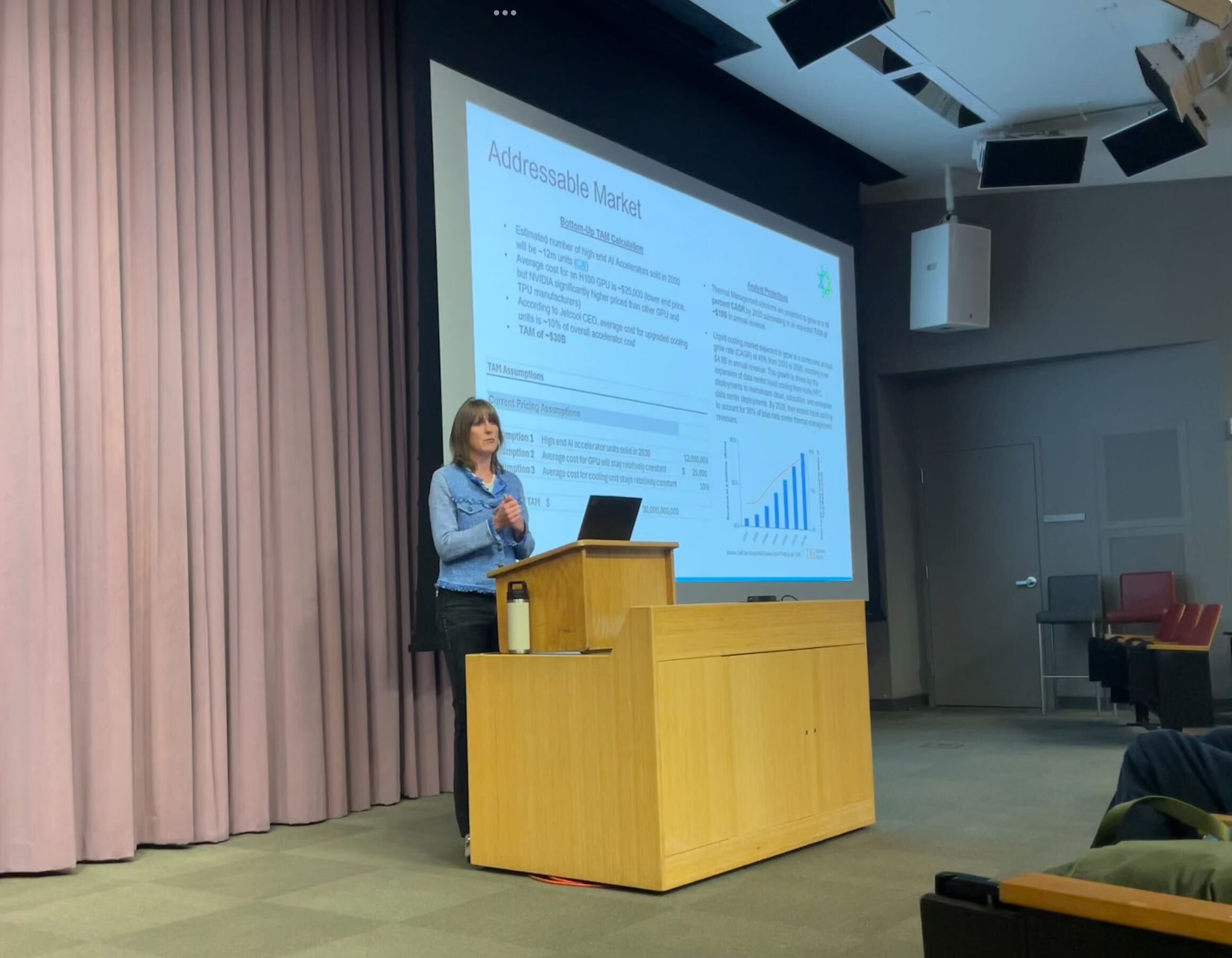Experts issue warning as residents could soon see surging energy bills from U.S. law changes: ‘Will severely restrict economic growth’ – The Cool Down

Report on the Economic and Sustainable Development Implications of New U.S. Energy Legislation
1.0 Executive Summary
A new federal law, referred to as the “Big Beautiful Bill,” has significantly altered the incentive landscape for renewable energy in the United States. This report analyzes the projected impacts of this legislation, with a specific focus on the economy of Texas and its alignment with the United Nations Sustainable Development Goals (SDGs). The primary findings indicate that the reduction in support for renewable energy projects poses a significant threat to achieving SDG 7 (Affordable and Clean Energy), SDG 8 (Decent Work and Economic Growth), and SDG 9 (Industry, Innovation, and Infrastructure), potentially leading to energy price inflation, electricity shortfalls, and constrained economic growth.
2.0 Legislative Changes and Impact on SDG 7: Affordable and Clean Energy
The new legislation curtails the timeline for renewable energy tax incentives, directly impacting the progress toward ensuring access to affordable, reliable, sustainable, and modern energy for all (SDG 7).
2.1 Revised Incentive Deadlines
- Wind and solar energy projects must now commence construction by July 4, 2026, or be operational by the end of 2027 to qualify for tax incentives.
- This represents a significant shortening of the previous deadline of December 31, 2032.
2.2 Projected Consequences for Clean Energy Deployment
- Reduced Capacity: BloombergNEF projects that the annual installation of wind, solar, and battery-storage facilities in 2035 will be 23% lower than previously anticipated.
- Hindrance to SDG 7: By disincentivizing investment in solar and wind, the law slows the transition to clean energy, undermining a key target of SDG 7. Texas, which currently derives 30% of its electricity from renewable sources, is particularly vulnerable to this policy shift.
3.0 Economic and Infrastructural Ramifications in Texas
The legislative changes are expected to have profound negative effects on the Texas economy, directly conflicting with SDG 8 (Decent Work and Economic Growth) and SDG 9 (Industry, Innovation, and Infrastructure).
3.1 Threat to Economic Growth (SDG 8)
- Texas’s recent economic outperformance, with a 51% GDP increase from 2020 to 2024, has been largely fueled by affordable electricity.
- Energy experts warn that an inability to meet rising energy demand will lead to higher prices, removing the state’s competitive advantage and severely restricting economic growth, contrary to the objectives of SDG 8.
3.2 Challenges for Sustainable Infrastructure (SDG 9)
Surging energy demand, driven by industrial needs such as data centers, requires rapid expansion of resilient and sustainable infrastructure, a core component of SDG 9.
- Demand Projections: Peak energy demand in Texas is forecast to increase from 85.5 gigawatts in 2023 to 150 gigawatts by 2030.
- Deployment Speed: Renewable energy projects, such as solar and battery facilities, can be brought online significantly faster (e.g., two years) than non-renewable sources like natural gas plants, which face five-year waitlists for key components.
- Infrastructure Gap: The new law is antithetical to building the necessary energy infrastructure, as it makes the fastest and cleanest options more expensive and less attractive for development. Since 2020, 94% of new energy capacity in Texas has come from solar, wind, and battery storage.
4.0 National Energy Security and Climate Action (SDG 11 & SDG 13)
The situation in Texas reflects a national challenge in maintaining sustainable communities and taking action on climate change.
4.1 Impact on Sustainable Cities and Communities (SDG 11)
- The rising electricity consumption of data centers, projected to reach up to 12% of total U.S. production by 2028, threatens grid stability and energy affordability for all consumers.
- Failure to expand the energy supply with clean, rapidly deployable sources could lead to electricity price increases and shortfalls, undermining the goal of making human settlements inclusive, safe, resilient, and sustainable (SDG 11).
4.2 Implications for Climate Action (SDG 13)
- Slowing the deployment of renewable energy is a direct setback for climate action goals (SDG 13). Relying on non-renewable sources to meet new demand is not feasible given supply chain constraints and is inconsistent with national and global climate commitments.
5.0 Conclusion and Recommendations
The “Big Beautiful Bill” is projected to impede progress toward multiple Sustainable Development Goals by creating barriers to the expansion of affordable and clean energy. This will likely result in negative economic consequences, particularly for high-growth states like Texas, and challenge the development of sustainable infrastructure needed to support future industrial demands.
5.1 Policy and Individual Actions
- Policy Advocacy: Stakeholders should advocate for the reinstatement of long-term renewable energy incentives to align national policy with SDG 7 and SDG 13.
- Decentralized Energy Production: Promoting individual and community-level adoption of solar panels and battery storage can enhance grid resilience, support SDG 7 and SDG 11, and reduce reliance on large-scale, overtaxed energy infrastructure.
Analysis of the Article in Relation to Sustainable Development Goals
1. Which SDGs are addressed or connected to the issues highlighted in the article?
-
SDG 7: Affordable and Clean Energy
- The article’s central theme is energy, specifically the shift from incentives for renewable energy (solar, wind) to policies that may hinder their development. It discusses the affordability of electricity (“higher energy prices”), the reliability of the supply (“potential electricity shortfalls”), and the importance of clean energy sources to meet rising demand.
-
SDG 8: Decent Work and Economic Growth
- The article directly links energy policy to economic outcomes. It explicitly states that cutting renewable energy incentives could lead to “slower economic growth” and “severely restrict economic growth” in Texas. It highlights how cheap electricity has fueled Texas’s strong economic performance, with its GDP increasing by 51% from 2020 to 2024.
-
SDG 9: Industry, Innovation, and Infrastructure
- The discussion revolves around energy infrastructure. The article emphasizes the need to build new power generation facilities to meet surging demand from industries like data centers. It contrasts the rapid deployment of renewable infrastructure (“a massive new solar-and-battery facility… was brought online just two years after shovels hit the ground”) with the longer lead times for non-renewable sources.
-
SDG 13: Climate Action
- While not the primary focus, the article implicitly addresses climate action by contrasting “renewable energy” and “cleaner… renewable energy” with “Dirtier, non-renewable sources of energy.” The policy change discussed—cutting incentives for wind and solar—is a national policy that directly impacts the country’s ability to transition to a low-carbon energy system.
2. What specific targets under those SDGs can be identified based on the article’s content?
-
SDG 7: Affordable and Clean Energy
- Target 7.2: By 2030, increase substantially the share of renewable energy in the global energy mix. The article directly discusses this by stating that Texas relies on renewable sources for 30% of its electricity and that 94% of new energy capacity since 2020 has come from solar, wind, and battery storage. The new law’s projected impact—a 23% reduction in new renewable facilities by 2035—directly threatens progress on this target.
- Target 7.a: By 2030, enhance international cooperation to facilitate access to clean energy research and technology… and promote investment in energy infrastructure and clean energy technology. The article focuses on national policy (tax incentives) that promotes or discourages investment in clean energy infrastructure like wind and solar projects. The cuts to these incentives are a direct setback to this target’s goal of promoting investment.
-
SDG 8: Decent Work and Economic Growth
- Target 8.1: Sustain per capita economic growth in accordance with national circumstances. The article warns that the new energy policy will “severely restrict economic growth” and cause “slower economic growth,” directly relating to this target. It uses Texas’s past GDP growth of 51% as a benchmark that is now at risk.
-
SDG 9: Industry, Innovation, and Infrastructure
- Target 9.4: By 2030, upgrade infrastructure and retrofit industries to make them sustainable, with increased resource-use efficiency and greater adoption of clean and environmentally sound technologies. The article discusses the massive build-out of new energy infrastructure, noting that 94% of recent capacity additions in Texas were from clean technologies (solar, wind, battery storage). The new law impacts the future adoption rate of these technologies.
-
SDG 13: Climate Action
- Target 13.2: Integrate climate change measures into national policies, strategies and planning. The “Big Beautiful Bill” that cuts renewable energy incentives is presented as a national policy that runs counter to integrating climate-friendly measures. The article’s call to action for readers to vote for candidates who support renewable-energy incentives is a call to influence national policy in line with this target.
3. Are there any indicators mentioned or implied in the article that can be used to measure progress towards the identified targets?
-
SDG 7: Affordable and Clean Energy
- Indicator for Target 7.2 (Renewable energy share): The article provides a direct data point: “renewable sources for 30% of its electricity” in Texas. It also notes that “94% of new energy capacity since 2020” came from renewables and storage. The projection that new facilities will be “23% lower” provides a metric for future progress or regression.
- Indicator for Target 7.1 (Access to affordable and reliable energy): The article implies indicators through its warnings of “higher energy prices” and “potential electricity shortfalls,” which are measures of affordability and reliability.
-
SDG 8: Decent Work and Economic Growth
- Indicator for Target 8.1 (Annual growth rate of real GDP): The article provides a specific economic indicator: “the Texas economy… increasing its GDP by 51% versus 37% nationwide” from 2020 to 2024. The prediction of “slower economic growth” suggests this rate will decline.
-
SDG 9: Industry, Innovation, and Infrastructure
- Indicator for Target 9.4 (Adoption of clean technologies): The statistic that “non-renewables have made up just 6% of new energy capacity since 2020, with the remaining 94% coming from new solar, wind, and battery-storage facilities” serves as a direct indicator of the rate of adoption of clean technologies in the Texas energy sector.
-
SDG 13: Climate Action
- Indicator for Target 13.2 (National policies): The existence and terms of the “Big Beautiful Bill,” which cuts tax incentives for renewable energy projects, serves as a qualitative indicator of national policy direction regarding climate action.
4. Table of SDGs, Targets, and Indicators
| SDGs | Targets | Indicators |
|---|---|---|
| SDG 7: Affordable and Clean Energy |
|
|
| SDG 8: Decent Work and Economic Growth |
|
|
| SDG 9: Industry, Innovation and Infrastructure |
|
|
| SDG 13: Climate Action |
|
|
Source: thecooldown.com

What is Your Reaction?
 Like
0
Like
0
 Dislike
0
Dislike
0
 Love
0
Love
0
 Funny
0
Funny
0
 Angry
0
Angry
0
 Sad
0
Sad
0
 Wow
0
Wow
0

















































:focal(1500,1000)/https://media.globalcitizen.org/a6/9a/a69a4720-d8a1-4715-b596-18738d03c05c/rotary_polio_hero_image.jpg?#)






/countries/sri-lanka/photo-credit---dmc-sri-lanka.tmb-1200v.jpg?sfvrsn=dc298bcc_1#)

















